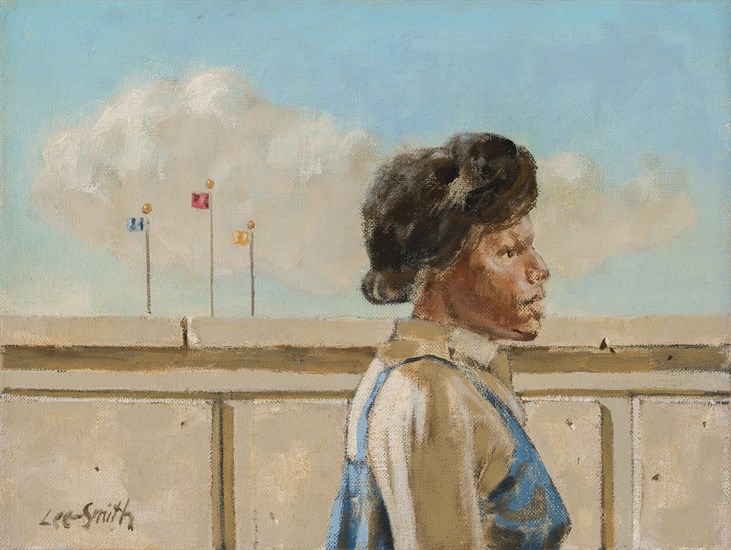1915-1999
Works in the Collection
Biography
Hughie Lee-Smith was born in 1915, in Eustis, Florida, and spent most of his formative years in Atlanta, Georgia under the care of his maternal grandmother. In 1925, Lee-Smith and his grandmother moved to Cleveland, Ohio to be with his mother who at the time was pursuing a singing career. Both his mother and his grandmother were extremely attentive to his artistic talent and quickly enrolled him in Saturday classes at the Cleveland Museum of Art. After two years of study, he advanced to the Cleveland School of Art (presently known as the Cleveland Institute of Art). In 1934, Lee-Smith graduated high school and was awarded a scholarship to attend the Detroit Institute of Arts and Crafts. The next year, he was awarded a second scholarship from the Scholastic Awards exhibition held at the Pittsburgh Carnegie Institute.
An important opportunity arose the next year when Gilpin’s Players, an acting troupe of Karamu House settlement house, awarded him a full scholarship. While at Karamu House, Lee-Smith taught classes, and eventually co-founded the Cleveland Karamu House Artist Association with fellow artists Charles Salleé and Elmer Brown. Lee-Smith graduated from the Cleveland School of Art in 1938 and began working with the WPA, developing a series of lithographs inspired by themes of racial equality and justice. In 1943, he was drafted into the Navy, spending most of his service stationed near Chicago at the Great Lakes Naval Base. His proximity to the city allowed him to connect with other prominent African-American artists, such as Charles Sebree and Charles White, at the South Side Community Art Center.
Lee-Smith was not well known on the East Coast for most of his career, but a solo exhibition at Howard University in 1955 sparked national attention. In 1957, he relocated to New York City, and in 1967, he was chosen as the second African American artist (after Henry Ossawa Tanner) to receive full membership to the National Academy of Art and Design. Lee-smith taught as a visiting instructor and artist-in-residence at various institutions, including Howard University. His work can be found in numerous museums and private collections including The Smithsonian American Art Museum, The Metropolitan Museum of Art, and the Detroit Institute of Art. Hughie Lee-Smith died in 1999.


